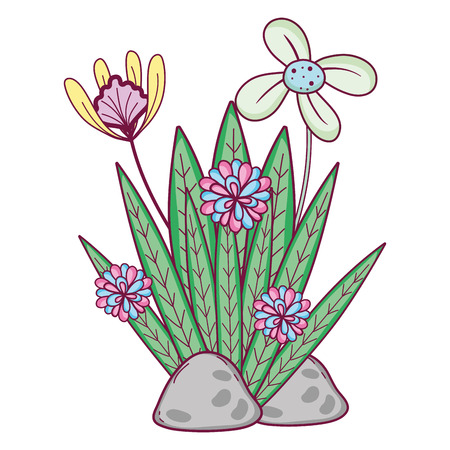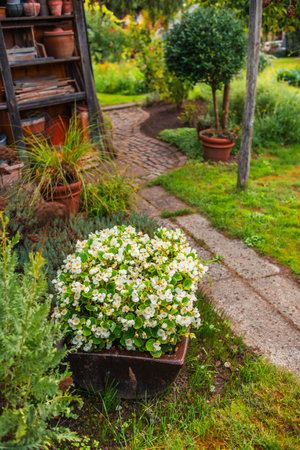Introduction to Loppers in the British Garden
In the heart of every classic British garden, nestled among fragrant rose bushes and ancient hedgerows, you are bound to find a pair of trusty loppers. These long-handled cutting tools have been cherished for generations, earning their place as a staple in sheds up and down the country. For British families, loppers are more than just a practical device—they represent a timeless connection to tradition, patience, and the gentle care of nature. Whether you’re shaping an apple tree with your children or taming an unruly holly hedge on a crisp morning, loppers offer both precision and power, making them indispensable for home gardeners seeking to keep their outdoor spaces thriving. Their enduring value lies not only in their ability to tackle thick branches that secateurs cannot manage but also in how they invite us all—young and old—to step outside together and nurture our green havens with care and intention.
Types of Loppers and Their Uses
When it comes to keeping a British garden neat and thriving, loppers are an essential tool for the whole family. But did you know there’s more than one type of lopper? Choosing the right kind can make all the difference in your pruning adventures, whether you’re shaping a rose bush with your child on a sunny afternoon or tackling unruly hedges after a classic rainy spell. Let’s explore the main types—bypass and anvil loppers—and see which jobs they’re best suited for in the UK’s unique climate.
Bypass Loppers: The Gentle Pruners
Bypass loppers work much like a pair of scissors, with two blades gliding past each other for a clean cut. This makes them perfect for cutting live, green branches and stems. In our often damp British climate, plants can be soft and sappy, so bypass loppers help prevent crushing or damaging delicate new growth—a real friend to our cherished apple trees, hydrangeas, or those climbing roses that need regular love.
Everyday Uses for Bypass Loppers
| Plant Type | Best Use |
|---|---|
| Fruit trees (e.g. apple, pear) | Pruning live branches for shape and health |
| Flowering shrubs (e.g. hydrangea, buddleia) | Removing spent blooms and soft stems |
| Climbers (e.g. wisteria, roses) | Tidying up vigorous new growth |
Anvil Loppers: The Tough Cutters
Anvil loppers have one sharp blade that closes onto a flat surface (the “anvil”). They’re ideal for cutting through dead wood or thicker, tougher stems—just what you need after winter storms when old branches need clearing away. Be mindful, though: they can crush living tissue, so save them for dry, woody material where precision is less important.
Everyday Uses for Anvil Loppers
| Plant Type | Best Use |
|---|---|
| Deadwood on trees and shrubs | Removing old or damaged branches |
| Mature hedges (e.g. hawthorn, privet) | Coping with thick stems that need taming |
| Bramble patches | Tackling stubborn old canes before new growth starts in spring |
A Handy Tip from Our Family Garden Shed
If you’re ever unsure which lopper to choose, remember: bypass for green, anvil for brown. Let little hands try both (with supervision!) so everyone learns how to care for our British plants together.

3. Choosing the Right Loppers for Your Garden
When it comes to selecting loppers for your British family garden, it’s a bit like choosing the right shoes for a woodland stroll—comfort and suitability matter for everyone involved! Start by considering the types of plants that flourish in UK gardens. If your borders are thick with hardy native shrubs such as hawthorn, elder or privet, you’ll need a sturdy bypass lopper that can glide cleanly through living branches without crushing them. For older or dead wood, anvil loppers are often the better fit, offering extra power to tackle tougher stems.
Comfort is key, especially if you hope to turn pruning into a cherished family activity. Look for loppers with adjustable handles so both adults and older children can find their perfect grip. Cushioned handles ease the strain during longer sessions, and lightweight models help little hands join in without fatigue. It’s always wise to try out different weights and handle styles at your local garden centre—let each family member see what feels right in their hands.
Don’t forget to check the maximum cutting diameter of your chosen lopper against the typical branch size in your patch. A tool that’s too small will struggle with mature lilac or apple trees, while a massive pair might feel unwieldy when trimming delicate rose bushes. By carefully matching your lopper to your garden’s needs—and making sure everyone in the family can wield it comfortably—you’ll nurture not only healthy plants but happy gardeners too!
4. Safe and Fun Lopper Use with the Family
Gardening is a wonderful way to connect with nature and your family, especially when you introduce children to practical garden tools like loppers. With a little care and creativity, lopper use can be both safe and enjoyable for all ages. Here are some essential safety tips and interactive ideas to help everyone get involved while nurturing a love for gardening in true British style.
Essential Safety Tips for Family Lopper Use
| Safety Tip | Why It Matters |
|---|---|
| Choose Age-Appropriate Tools | Select smaller, lighter loppers for younger gardeners, ensuring they can handle them comfortably. |
| Supervise at All Times | An adult should always be present when children are using loppers, guiding them step by step. |
| Wear Protective Gear | Gloves, sturdy shoes, and long sleeves help protect hands and arms from accidental nicks or scratches. |
| Teach Proper Handling | Show children how to carry loppers closed and point-down to prevent mishaps. |
| Designate a Safe Work Zone | Keep pets and other family members at a safe distance during cutting tasks. |
Interactive Ideas for Learning Together
- Lopper Relay: Set up a friendly challenge where each family member trims one branch before passing the loppers along, encouraging teamwork and patience.
- Name That Plant: As you prune together, identify different shrubs or trees, teaching children their names and why pruning helps them thrive in the British climate.
- Create a Wildlife Pile: Gather cut branches into a corner to build a habitat for hedgehogs or insects—a great way to talk about local wildlife.
- Lopper Care Routine: Let children wipe down the blades after use, learning responsibility while caring for their tools.
Cultivating Garden Care Habits Early On
Inviting children into the garden with you builds confidence and curiosity. Through simple, supervised activities with loppers, kids develop respect for tools and plants alike. Whether youre taming unruly roses or shaping an elderberry bush, these shared experiences nurture more than just your garden—they grow lasting family memories rooted in British outdoor tradition.
5. Lopper Care and Seasonal Tips
If you’ve ever watched a grandparent gently oiling their garden shears at dusk, you’ll know that caring for your loppers is as much a part of British gardening as the Chelsea Flower Show. Proper maintenance ensures your trusty tools last through countless springs and autumns, ready for each new pruning adventure. Let’s explore how to keep your loppers in tip-top shape through Britain’s ever-changing seasons, weaving in the wisdom handed down by generations of British gardeners.
Cleaning: A Ritual Rooted in Tradition
After a busy day among the roses or apple trees, it’s tempting to pop your loppers straight back in the shed. But a quick clean makes all the difference. Wipe blades with a damp cloth to remove sap and debris—some gardeners swear by a splash of soapy water, followed by thorough drying. This simple ritual prevents rust, stops disease spreading between plants, and keeps those blades gliding smoothly. Remember, as Granny used to say, “Look after your tools and they’ll look after you.”
Sharpening and Oiling: Secrets for Smooth Cuts
A dull blade is a gardener’s nemesis! Invest in a small sharpening stone or file (a staple in many an old biscuit tin on British allotments). Give the blades a gentle once-over every few weeks during active pruning months. After sharpening, apply a drop of light machine oil or even a dab of vegetable oil if you’re caught short. This classic tip keeps rust at bay and movement smooth, especially important with our famously damp weather.
Seasonal Storage: From Frosty Winters to Dewy Mornings
Winter in Britain can be unforgiving on neglected tools. Before tucking your loppers away for the colder months, ensure they’re clean and dry. Store them somewhere sheltered—a garden shed or garage is ideal, hung up or laid flat to avoid warping the handles. For wooden handles, rub in a little linseed oil; it nourishes the wood and prevents cracking from winter chills.
Springtime Revival: Ready for New Growth
Come spring, give your loppers a quick check-up before heading out among new shoots. Tighten any loose bolts and test the action—stiffness can usually be sorted with another dash of oil. This seasonal attention means you’ll always be prepared when that perfect pruning day appears between April showers.
Passing Down Plant Wisdom
Caring for loppers isn’t just about prolonging tool life—it’s about honouring the traditions that connect us to generations past. Involving children in cleaning and storing garden tools creates precious memories and teaches them respect for both plants and craftsmanship. The next time you’re out tending to your patch, invite little hands to help; together, you’ll nurture more than just your garden—you’ll grow stories that last through every season.
6. Encouraging Childrens Curiosity through Pruning
Introducing children to the use of loppers in the British garden can be a delightful way to spark their curiosity about nature and plant life. With adult supervision, pruning becomes more than just a gardening chore; it transforms into a moment ripe for learning and wonder. Here are some ways you can turn lopper use into teachable moments, nurturing your childs interest in plants and the natural world.
Invite Questions and Observations
Before you begin pruning, encourage your child to look closely at the branches and leaves. Ask open-ended questions such as, “Why do you think we need to trim this branch?” or “What do you notice about this part of the plant?” This invites them to observe details and think critically, laying the groundwork for deeper understanding.
Explain Plant Growth and Health
Use the opportunity to discuss why pruning is important for plant health. You might say, “Just like we get haircuts to stay tidy, plants need their branches trimmed so they can grow stronger.” Show them how removing dead or overcrowded branches helps sunlight reach more parts of the plant, encouraging healthy growth.
Hands-On Learning with Loppers
With safety in mind, let your child help operate the loppers under close supervision. Demonstrate how to hold them firmly and make careful cuts. Explain why certain branches are chosen for pruning. This hands-on approach makes the process memorable and helps build practical skills.
Spotting Wildlife Together
Pruning often reveals hidden creatures—perhaps a sleepy ladybird or a spiders web nestled among the twigs. Pause to observe these discoveries together. Discuss how gardens provide habitats for many animals, reinforcing the interconnectedness of all living things.
Cultivating Respect for Nature
Finally, encourage your child to reflect on how their actions help care for the garden. Express appreciation for their help and talk about how every small effort supports thriving plants and wildlife. Through these shared experiences, you foster not only gardening skills but also a lifelong sense of wonder and respect for Britains green spaces.


